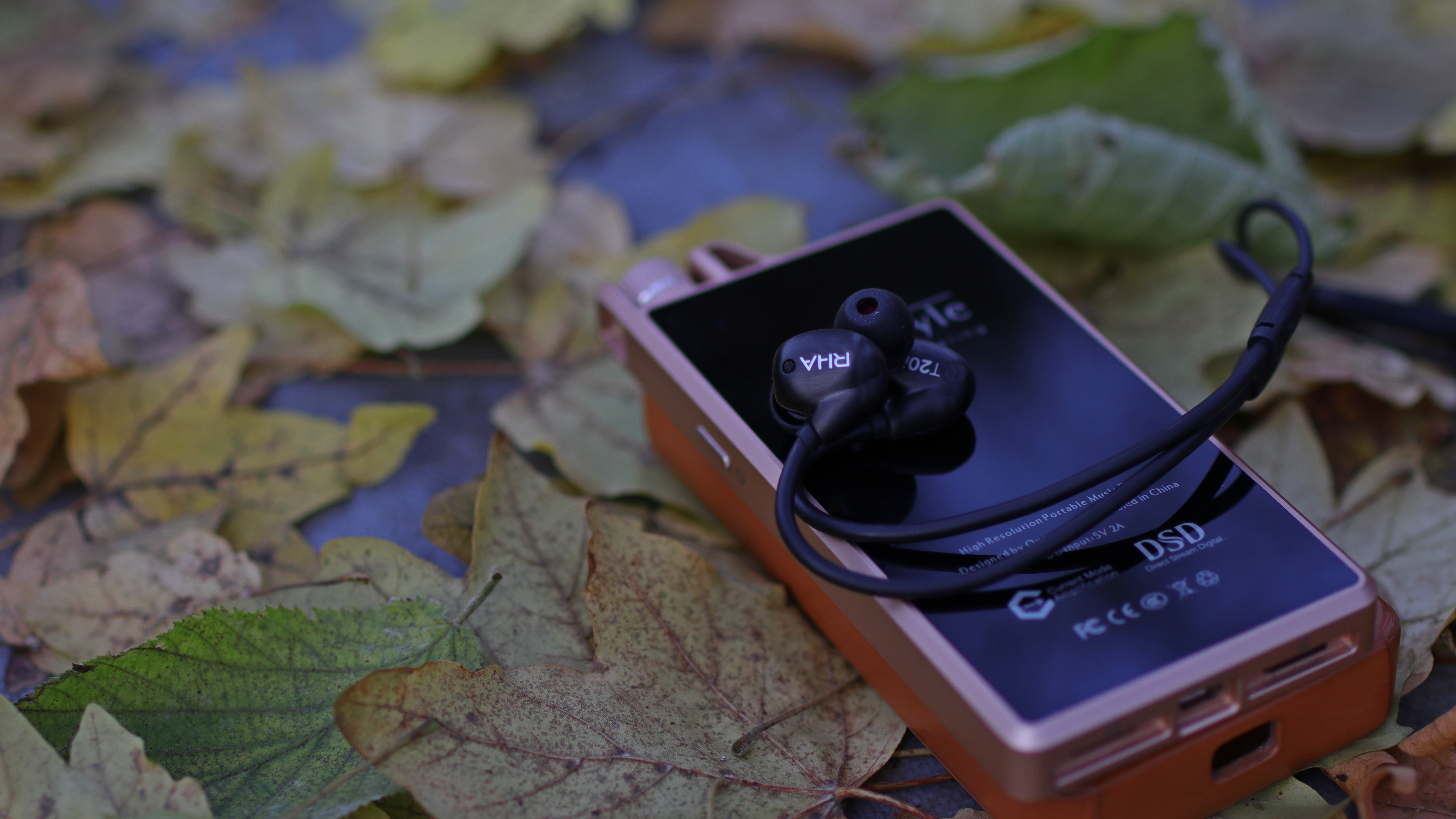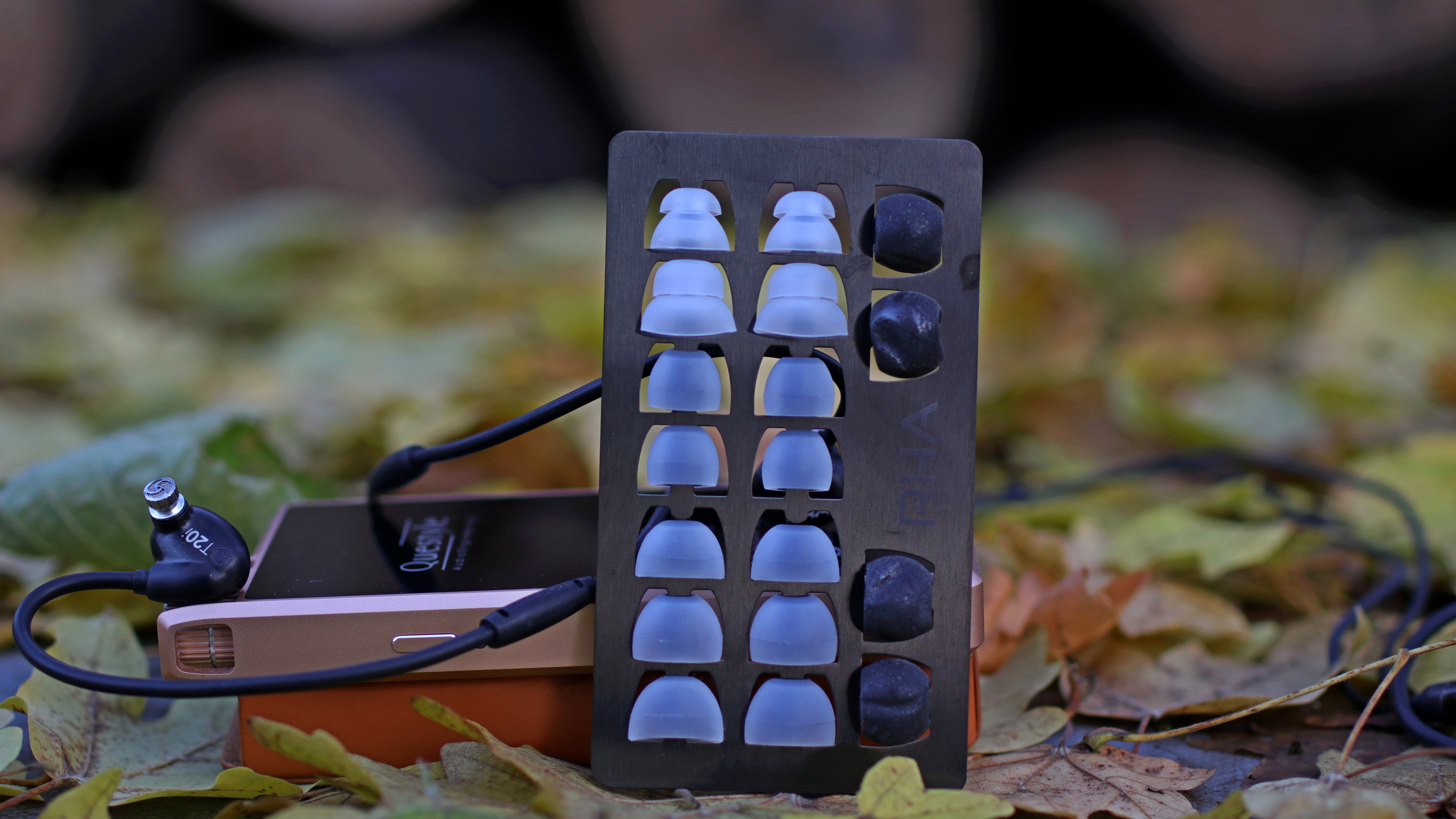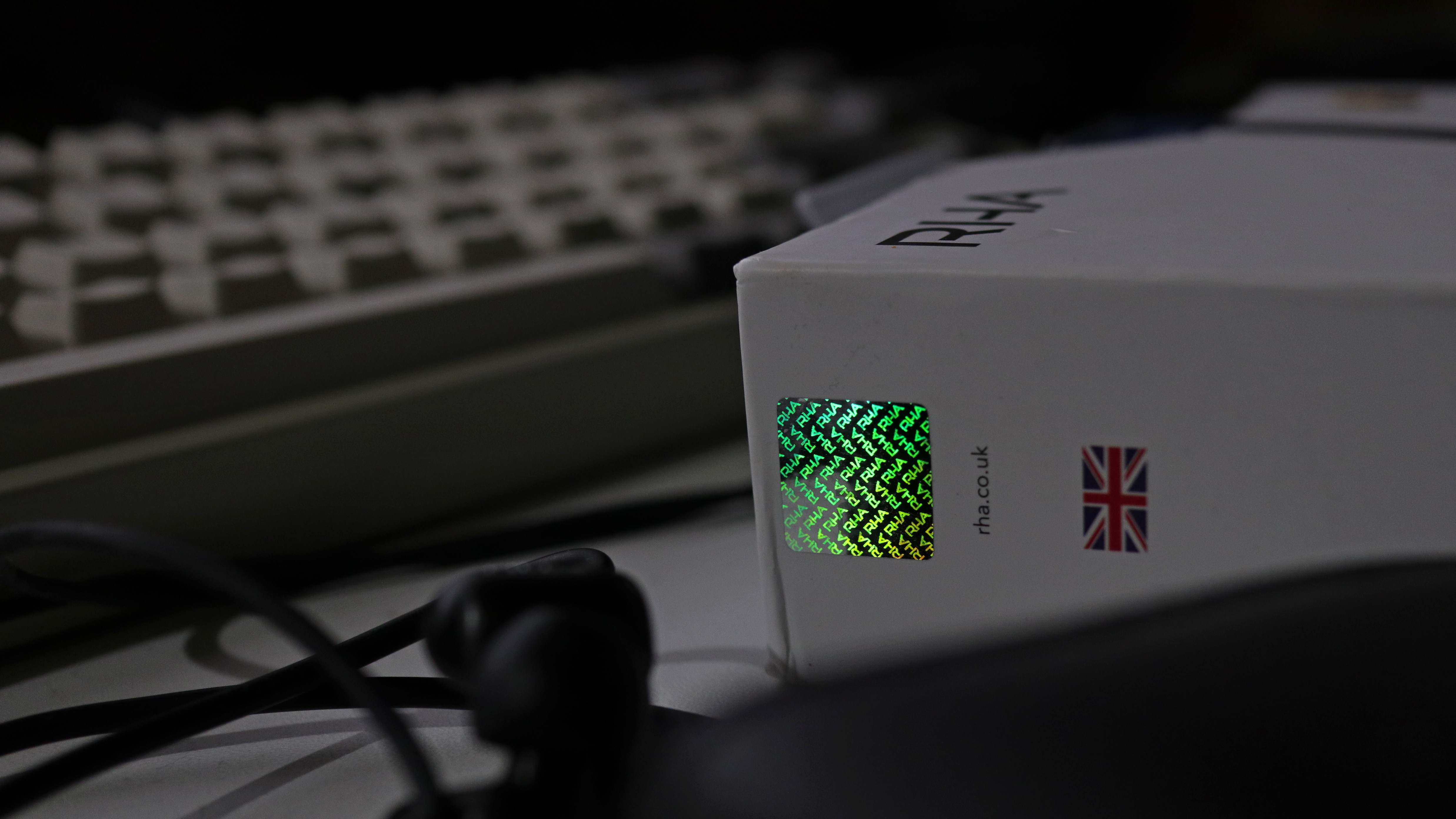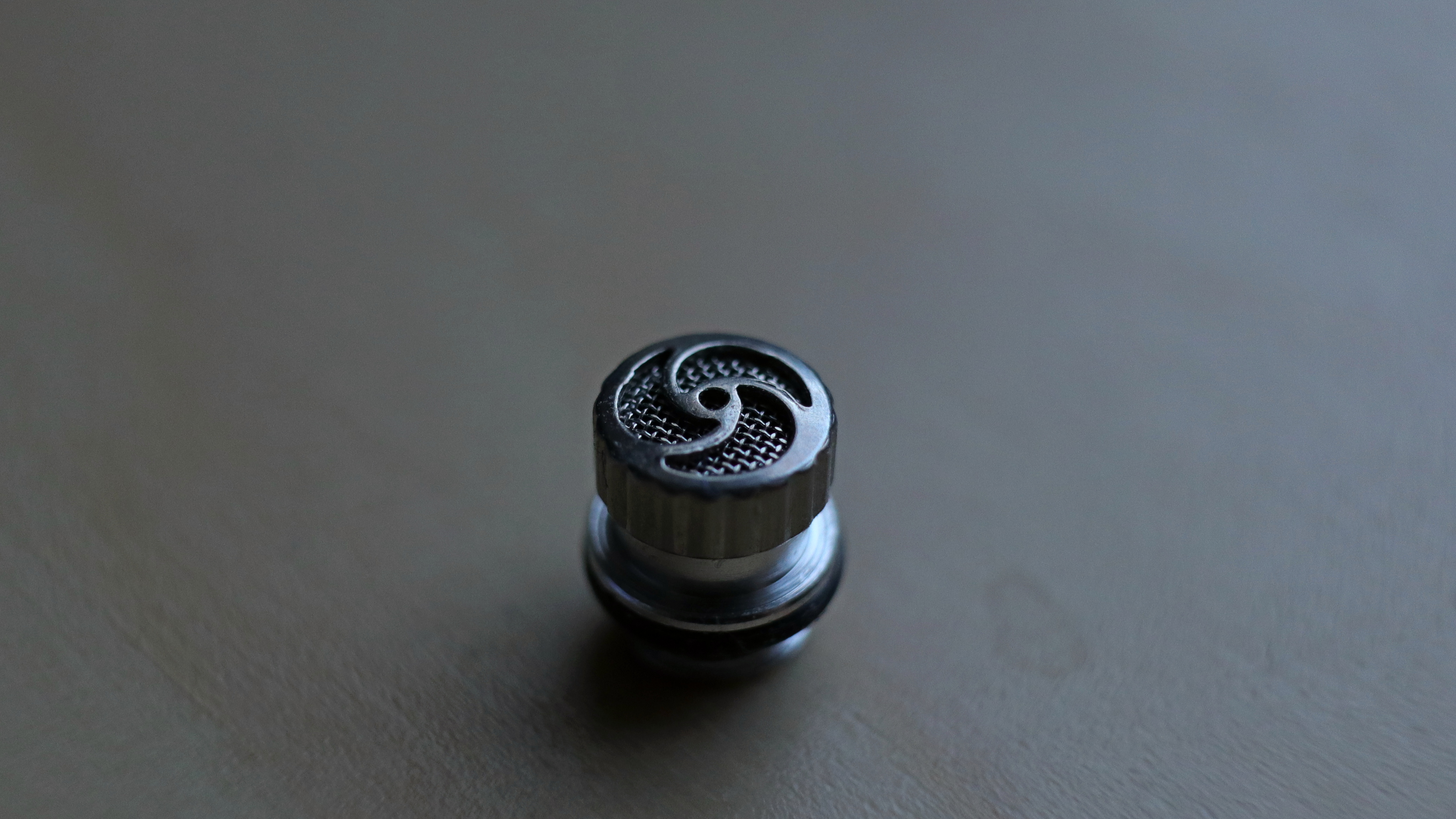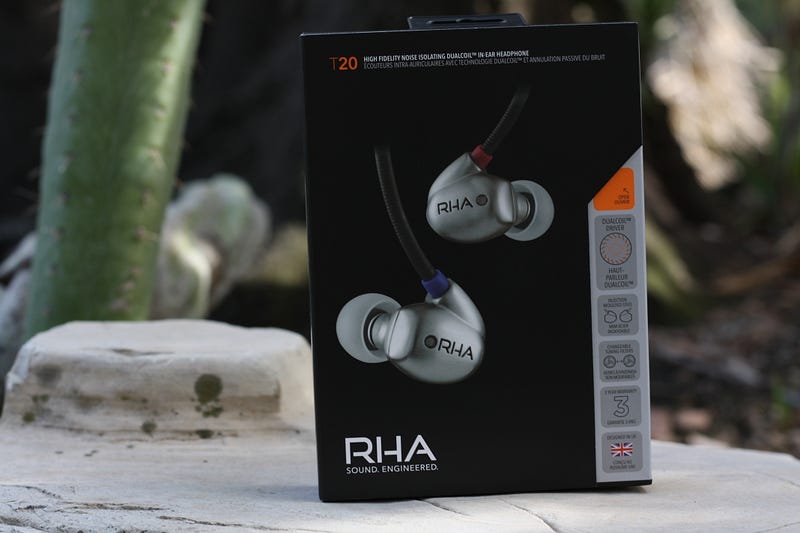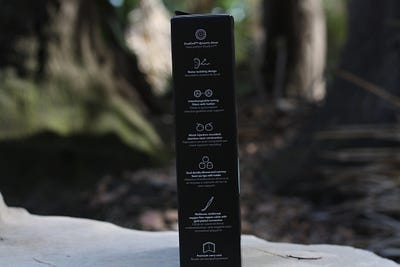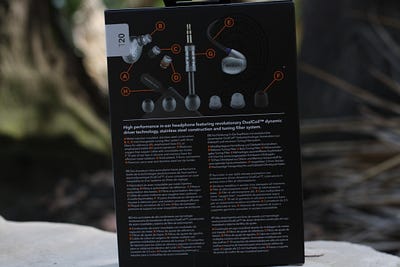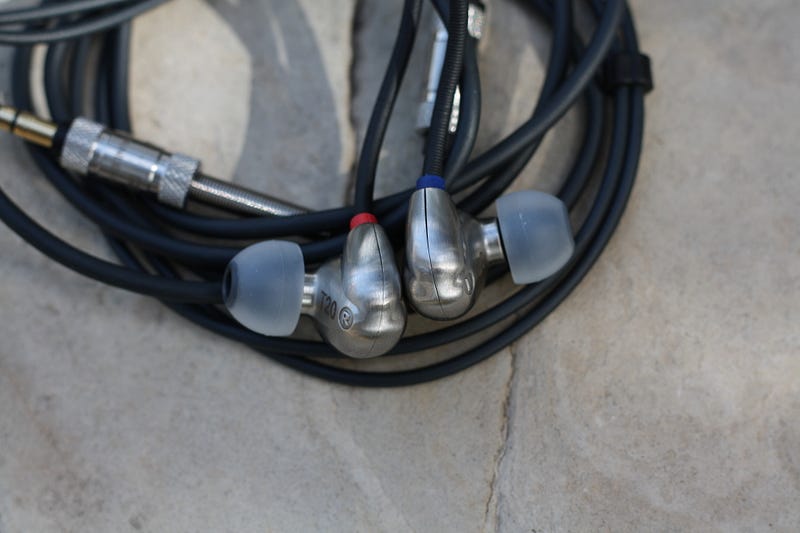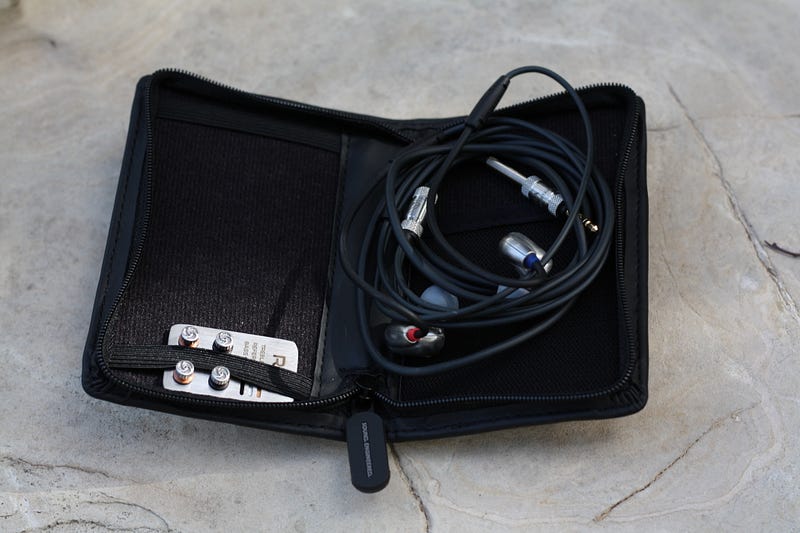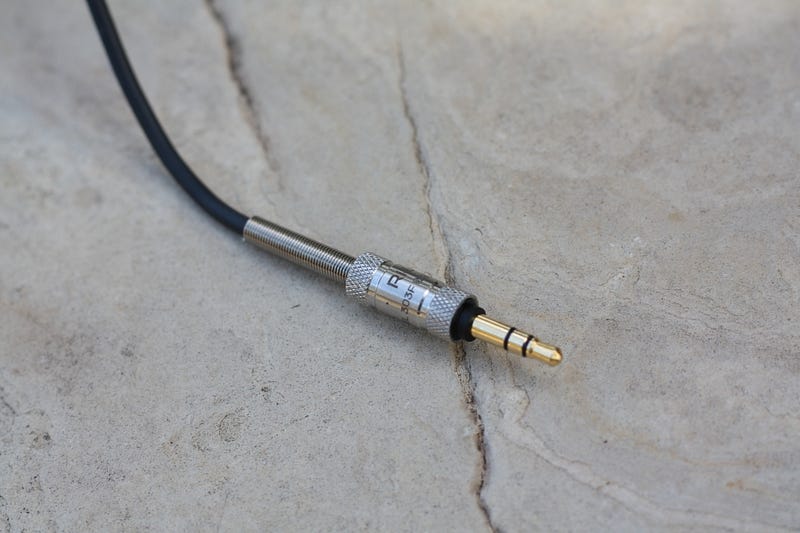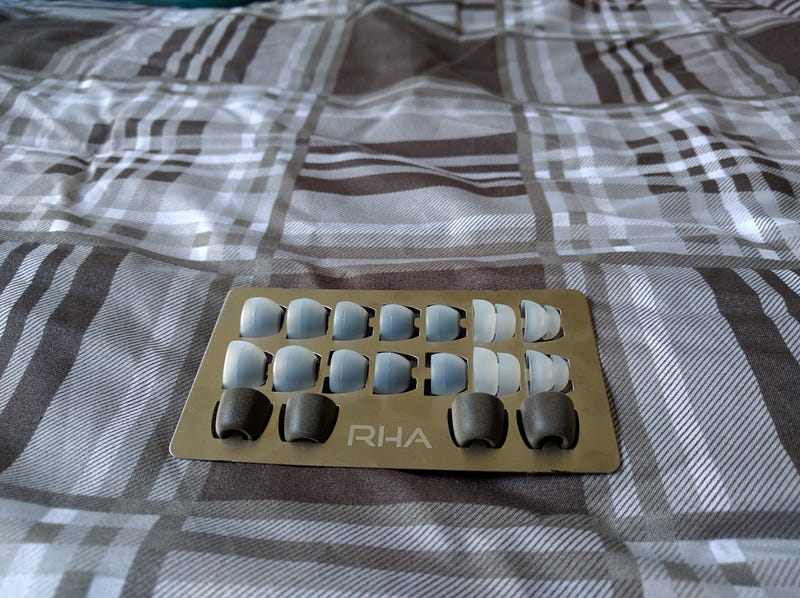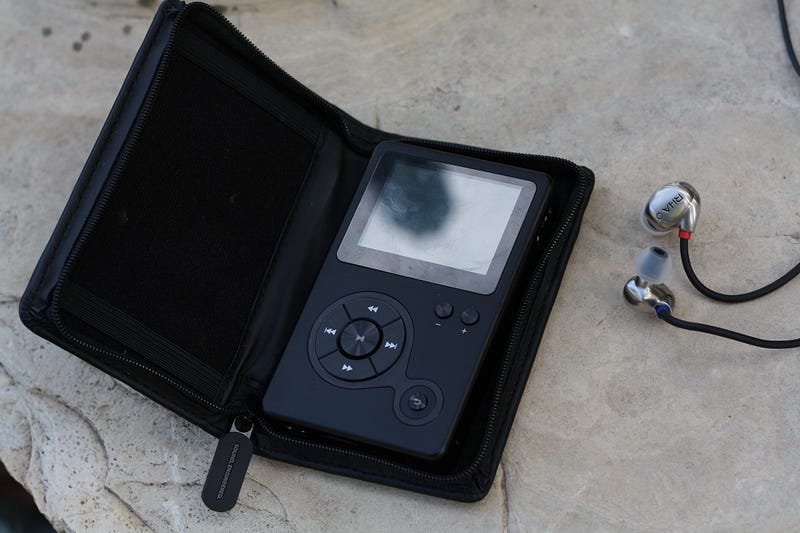Introduction
I am part of the RHA T20 Tour and received my IEMs on Monday.
I have listened to them a WHOLE lot since then and here are my discoveries.
The listening took place sat down, on the move, on the run and any way I could think of to put these Scottish Gems through their paces.
They were plugged into my DX100 shown above as well as my Note II, Macbook Pro, Colorfly C3 and Cambridge Audio Dacmagic Plus. I have other kit but this felt like a good cross section.
I will go into the music I listened to in more depth as I go along, the tracks ranged from Full Orchestra to angry men playing guitars extremely loud.

The Package
RHA has some wonderful eye candy for the Headfier to enjoy and I unwrapped this with anticipation.

Opening up further the usual touches RHA owners will be familiar with, and the filters shown clearly. A diagram on the inside sleeve explaining new dual voice coil technology innovation in the drivers.




The accessories are what we have come to expect from RHA and now even more. A manual with everything you thought you needed to know about the T20 complete with graphs safety info i.e don't turn them up too loud!
A cable clip which is really tight on the cable so needs to be fitted in the right place to start with and can't easily be slid up and down cable of this thickness. If you're out walking or running this clip will definitely be needed because there's a significant length to the multicore copper cable and it'll swing everywhere or use up a pocket with the excess being stuffed in there.
10 sets of tips in silicone or memory foam should ensure a good fit for most ears. The mouldable ear hooks and smoothness of the driver housings should get most ears sorted after a few tries.
The carry case will house the T20, it's ear tips and clip and filters when not in use and is the same as my 750 case which has lasted well and slides in and out of my pockets really well as well as looking black and stylish.
For even more customising RHA has introduced a 3 filter option for their flagship model. Bass will boost the lower frequency range , neutral will keep bass and treble under control and the treble filter will boost the upper end of the spectrum. The filters screw into the drivers and are a doddle to fit , so you can interchange according to mood , music or for the sake of change.
The build



The build as you can see has been looked at with great care . Every stress point on the cable is reinforced in steel or tough plastic. The cable is thicker than most IEMs I have come across on the market. The design is now all in black which is a cosmetic improvement over the previous grey and black. The design of the driver housing , in the same way as the T10 , means that more material is going into the ear than previously on the 750. The T20 is a far better fit in my ears than the 750 which occasionally can slip out slightly but noticeably. The T20s, under normal use, are a solid fit for hours as they power through track after track. Anyone having any doubts about the build of these should be made aware that RHA are offering a 3 year warranty, not every manufacturer is doing that .....
The Comfort
These are heavy! Made of metal injection moulded stainless steel there's nothing flimsy here, and I had a sense of foreboding when I went to put them on for the first time , being aware of the fit issues I have with my Sennheiser IE800s which are half this weight. Thankfully the memory wire hooks with the around the ear design hold most all of the weight away from the ear lobe. I experienced the tiniest of aches in my right ear on the fit and I could certainly tell there was quite some weight in my ear but I was able to wear these for 6 hours at a time and soon forgot they were in.
Walking needed careful placement of the cable clip , the cable produced no noise and there was the odd noise caused by the ear hook part of the cable bouncing up and down very slightly.
Running needed a tightening of the chin strap to minimise the bouncing vibration caused by more pronounced bouncing of the ear hooks.
A comparison between 2 similar priced IEms I own; the Klipsch X10is are a thinner design and have to be inserted deeper into the ear canal, they are far less comfortable to wear , they can't be worn over the ear, they have lots of cable noise and don't isolate well enough to even consider running. When it's windy outside it's no place for the Klipsch.
The Sony XBA4ips have just as large a housing as the T20s but have a much shorter fit and are designed to be worn down from the ear. They are difficult to wear even walking , they stick a long way out of the ear lobe and have to be squashed in pretty tight to get a good seal and need constant readjusting when walking. Running is out for these and I can't wear them for as long as I could wear the T20s.
The Sound
My first listening was through my Note II headphone out. Most people will buy these for their Phone , Iphone or Ipod I reckoned.
Neutral Filter, All Around the World Oasis, Played through Note II:
9 minutes of Oasis at their overblown best. The bass on these IEMs was in evidence straight away, they gave a low end oomph beneath the track , the chorus of this song has a lot thrown in there and the mids and upper range sounded slightly harsh. There was a full feeling to the sound.
The Sony XBA4ips did not have the low end oomph but the instruments were easier to pick out and there was more width to the sound and Oasis sounded more natural , if not quite as exciting.....
The Klipsch X10is sounded significantly thinner than the T20s although there was oomph there it was not as much . The mids and treble were less strained than the T20s
Spring The Four Seasons Revisited Vivaldi recomposed by Max Richter, Played through Note II
This time I put the T20s through their paces with a Chamber Orchestra and synth with Daniel Hope the principal soloist on violin.
There shouldn't be much low end on this piece and it builds to a flurry of violins complementing each other and spacing themselves between the left and right channels.
The T20s sounded nice and full through this track and found some low end from seemingly nowhere as the piece built; there was just a little strain in the sounds of the violins and there was a hint of congestion in the busy part of the section.
The Klipsch in comparison sounded thin and as good as they are could not really keep with the T20s unitil the busier part of Spring came fto the fore.
The XBA4s sounded natural and were controlled through the busier part of the track.
Hotel California The Eagles HDTracks, Played through Ibasso DX100
Less treble problems with this track , the bass sounds great once again ; if I had to be ultra critical the opening of the song with the guitar sounds like it's slightly too pronounced.
The Sonys in comparison sounded more natural , the bass could be followed more accurately and there was more space between the instruments.
Carnival De Paris Dario G, Played through Macbook Pro connected to Cambridge Audio Dacmagic Plus
Had to put this one in because of the bagpipe solo! Not what I normally listen to but a track many will be familiar with. Dance tracks seem to work extremely well with the T20s. Again , the bagpipe in all it's naked glory was slightly too shrill for my tastes. On balance I think the T20s were the more enjoyable listen for this track compared to the XBA4ips. The Klipsch by this stage has been relegated from the comparison because in my opinion I don't think they sounded as good as the T20s.
The 3 Filters
I tried the neutral filter for the first 5 days of my review period thinking that this would be the obvious choice for my listening tastes. I am not a basshead although I like a full sound and I listen to rock music primarily. I am not keen on sacrificing treble for the sake of more bass or sacrificing anything to boost mids or treble.
However given that I was finding the mids and trebles a bit glarey I tried the bass filter. The results surprised me. The bass was huge of course, but there seemed to be a toning down of the treble , whether that was because of the bass creeping into the mids I'm not sure , but there was a noticeable improvement in the treble.
The treble filter was not my preference, it knocked some of the bass response off and made the treble even more prominent. The presentation became too congested and loud.
Comparisons
Westone UM2 with ACS Custom Sleeves
The addition of the custom sleeves make this a price match. Performance of the UM2 is superior at low listening levels with better isolation - Classical Music would be the obvious example here. For rock and pop; the UM2 has more harshness in the upper range and less warmth in the lower ranges.
For comfort either pair fare well.
Klipsch X10i / X11i
Both IEMs have the same driver the difference is in the cabling and reinforcements of the X11i. The sound quality in the treble of the Klipsch is less harsh, but the thinness of the sound overrall means the T20s beat them convincingly for me.
MA750
Significantly less in price. Part of the RHA stable so therefore worthy of a listen side by side. These IEMs did not disgrace themselves against the T20 and had less noticeable treble boost. The bass was not in the same league. The fit of the 750 was much more problematic compared to the much larger driver housings of the T20.
Sony XBA4ip
The Sonys had a leaner signature with a wider sound stage and a natural sounding frequency response. It did not isolate anywhere near as well and was nothing like as comfortable as the T20.
Conclusion
The T20 is a solid built IEM capable of some good sound whether on the move or at home. The musical presentation overall is an exciting one , with tons of bass ; useful for masking the sounds of commuting on a train or the thud from running or walking.
I have decided to update this review in the light of so many competitors coming onto the market recently at a similar price level which do not have the treble fatigue that these IEMs suffer from. The treble on the RHA T20 is simply too harsh for extended listening and once over the honeymoon period of the deep bass and warmth of that and the lower mids I suspect some will struggle with these. There are other more subtle presentations available for similar money but each has their individual drawbacks and careful consideration is needed before you make the jump.
If your choice sways towards the T20- enjoy!
[Mod Edit: Improved the formatting.]
I am part of the RHA T20 Tour and received my IEMs on Monday.
I have listened to them a WHOLE lot since then and here are my discoveries.
The listening took place sat down, on the move, on the run and any way I could think of to put these Scottish Gems through their paces.
They were plugged into my DX100 shown above as well as my Note II, Macbook Pro, Colorfly C3 and Cambridge Audio Dacmagic Plus. I have other kit but this felt like a good cross section.
I will go into the music I listened to in more depth as I go along, the tracks ranged from Full Orchestra to angry men playing guitars extremely loud.

The Package
RHA has some wonderful eye candy for the Headfier to enjoy and I unwrapped this with anticipation.

Opening up further the usual touches RHA owners will be familiar with, and the filters shown clearly. A diagram on the inside sleeve explaining new dual voice coil technology innovation in the drivers.




The accessories are what we have come to expect from RHA and now even more. A manual with everything you thought you needed to know about the T20 complete with graphs safety info i.e don't turn them up too loud!
A cable clip which is really tight on the cable so needs to be fitted in the right place to start with and can't easily be slid up and down cable of this thickness. If you're out walking or running this clip will definitely be needed because there's a significant length to the multicore copper cable and it'll swing everywhere or use up a pocket with the excess being stuffed in there.
10 sets of tips in silicone or memory foam should ensure a good fit for most ears. The mouldable ear hooks and smoothness of the driver housings should get most ears sorted after a few tries.
The carry case will house the T20, it's ear tips and clip and filters when not in use and is the same as my 750 case which has lasted well and slides in and out of my pockets really well as well as looking black and stylish.
For even more customising RHA has introduced a 3 filter option for their flagship model. Bass will boost the lower frequency range , neutral will keep bass and treble under control and the treble filter will boost the upper end of the spectrum. The filters screw into the drivers and are a doddle to fit , so you can interchange according to mood , music or for the sake of change.
The build



The build as you can see has been looked at with great care . Every stress point on the cable is reinforced in steel or tough plastic. The cable is thicker than most IEMs I have come across on the market. The design is now all in black which is a cosmetic improvement over the previous grey and black. The design of the driver housing , in the same way as the T10 , means that more material is going into the ear than previously on the 750. The T20 is a far better fit in my ears than the 750 which occasionally can slip out slightly but noticeably. The T20s, under normal use, are a solid fit for hours as they power through track after track. Anyone having any doubts about the build of these should be made aware that RHA are offering a 3 year warranty, not every manufacturer is doing that .....
The Comfort
These are heavy! Made of metal injection moulded stainless steel there's nothing flimsy here, and I had a sense of foreboding when I went to put them on for the first time , being aware of the fit issues I have with my Sennheiser IE800s which are half this weight. Thankfully the memory wire hooks with the around the ear design hold most all of the weight away from the ear lobe. I experienced the tiniest of aches in my right ear on the fit and I could certainly tell there was quite some weight in my ear but I was able to wear these for 6 hours at a time and soon forgot they were in.
Walking needed careful placement of the cable clip , the cable produced no noise and there was the odd noise caused by the ear hook part of the cable bouncing up and down very slightly.
Running needed a tightening of the chin strap to minimise the bouncing vibration caused by more pronounced bouncing of the ear hooks.
A comparison between 2 similar priced IEms I own; the Klipsch X10is are a thinner design and have to be inserted deeper into the ear canal, they are far less comfortable to wear , they can't be worn over the ear, they have lots of cable noise and don't isolate well enough to even consider running. When it's windy outside it's no place for the Klipsch.
The Sony XBA4ips have just as large a housing as the T20s but have a much shorter fit and are designed to be worn down from the ear. They are difficult to wear even walking , they stick a long way out of the ear lobe and have to be squashed in pretty tight to get a good seal and need constant readjusting when walking. Running is out for these and I can't wear them for as long as I could wear the T20s.
The Sound
My first listening was through my Note II headphone out. Most people will buy these for their Phone , Iphone or Ipod I reckoned.
Neutral Filter, All Around the World Oasis, Played through Note II:
9 minutes of Oasis at their overblown best. The bass on these IEMs was in evidence straight away, they gave a low end oomph beneath the track , the chorus of this song has a lot thrown in there and the mids and upper range sounded slightly harsh. There was a full feeling to the sound.
The Sony XBA4ips did not have the low end oomph but the instruments were easier to pick out and there was more width to the sound and Oasis sounded more natural , if not quite as exciting.....
The Klipsch X10is sounded significantly thinner than the T20s although there was oomph there it was not as much . The mids and treble were less strained than the T20s
Spring The Four Seasons Revisited Vivaldi recomposed by Max Richter, Played through Note II
This time I put the T20s through their paces with a Chamber Orchestra and synth with Daniel Hope the principal soloist on violin.
There shouldn't be much low end on this piece and it builds to a flurry of violins complementing each other and spacing themselves between the left and right channels.
The T20s sounded nice and full through this track and found some low end from seemingly nowhere as the piece built; there was just a little strain in the sounds of the violins and there was a hint of congestion in the busy part of the section.
The Klipsch in comparison sounded thin and as good as they are could not really keep with the T20s unitil the busier part of Spring came fto the fore.
The XBA4s sounded natural and were controlled through the busier part of the track.
Hotel California The Eagles HDTracks, Played through Ibasso DX100
Less treble problems with this track , the bass sounds great once again ; if I had to be ultra critical the opening of the song with the guitar sounds like it's slightly too pronounced.
The Sonys in comparison sounded more natural , the bass could be followed more accurately and there was more space between the instruments.
Carnival De Paris Dario G, Played through Macbook Pro connected to Cambridge Audio Dacmagic Plus
Had to put this one in because of the bagpipe solo! Not what I normally listen to but a track many will be familiar with. Dance tracks seem to work extremely well with the T20s. Again , the bagpipe in all it's naked glory was slightly too shrill for my tastes. On balance I think the T20s were the more enjoyable listen for this track compared to the XBA4ips. The Klipsch by this stage has been relegated from the comparison because in my opinion I don't think they sounded as good as the T20s.
The 3 Filters
I tried the neutral filter for the first 5 days of my review period thinking that this would be the obvious choice for my listening tastes. I am not a basshead although I like a full sound and I listen to rock music primarily. I am not keen on sacrificing treble for the sake of more bass or sacrificing anything to boost mids or treble.
However given that I was finding the mids and trebles a bit glarey I tried the bass filter. The results surprised me. The bass was huge of course, but there seemed to be a toning down of the treble , whether that was because of the bass creeping into the mids I'm not sure , but there was a noticeable improvement in the treble.
The treble filter was not my preference, it knocked some of the bass response off and made the treble even more prominent. The presentation became too congested and loud.
Comparisons
Westone UM2 with ACS Custom Sleeves
The addition of the custom sleeves make this a price match. Performance of the UM2 is superior at low listening levels with better isolation - Classical Music would be the obvious example here. For rock and pop; the UM2 has more harshness in the upper range and less warmth in the lower ranges.
For comfort either pair fare well.
Klipsch X10i / X11i
Both IEMs have the same driver the difference is in the cabling and reinforcements of the X11i. The sound quality in the treble of the Klipsch is less harsh, but the thinness of the sound overrall means the T20s beat them convincingly for me.
MA750
Significantly less in price. Part of the RHA stable so therefore worthy of a listen side by side. These IEMs did not disgrace themselves against the T20 and had less noticeable treble boost. The bass was not in the same league. The fit of the 750 was much more problematic compared to the much larger driver housings of the T20.
Sony XBA4ip
The Sonys had a leaner signature with a wider sound stage and a natural sounding frequency response. It did not isolate anywhere near as well and was nothing like as comfortable as the T20.
Conclusion
The T20 is a solid built IEM capable of some good sound whether on the move or at home. The musical presentation overall is an exciting one , with tons of bass ; useful for masking the sounds of commuting on a train or the thud from running or walking.
I have decided to update this review in the light of so many competitors coming onto the market recently at a similar price level which do not have the treble fatigue that these IEMs suffer from. The treble on the RHA T20 is simply too harsh for extended listening and once over the honeymoon period of the deep bass and warmth of that and the lower mids I suspect some will struggle with these. There are other more subtle presentations available for similar money but each has their individual drawbacks and careful consideration is needed before you make the jump.
If your choice sways towards the T20- enjoy!
[Mod Edit: Improved the formatting.]











































 Unfortunately I havn't heard the DUNU so I cannot answer that.
Unfortunately I havn't heard the DUNU so I cannot answer that. 





